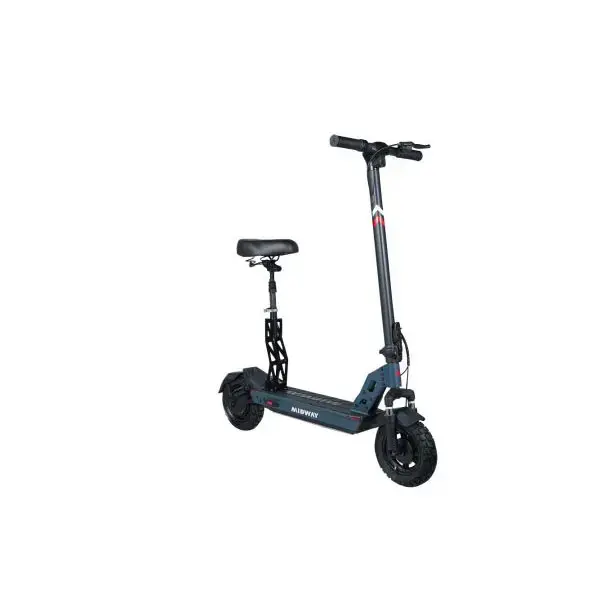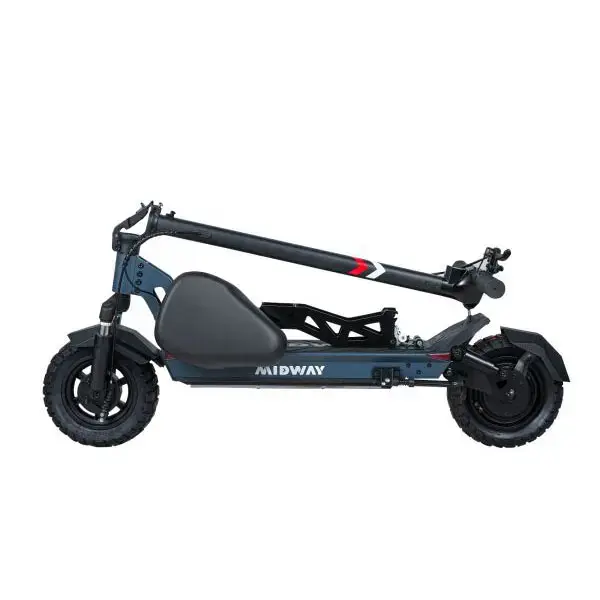What performance of electric scooters does the IEC standard have special provisions for?
What performance of electric scooters does the IEC standard have special provisions for?
IEC standard special provisions for electric scooter performance
In today's globalized business environment, electric scooters, as a convenient means of personal transportation, are gradually favored by international wholesale buyers. For electric scooter manufacturers, understanding and following the relevant standards of the International Electrotechnical Commission (IEC) is not only the key to entering the international market, but also the basis for ensuring product performance and safety. This article will explore in depth the special provisions of the IEC standard on the performance of electric scooters, aiming to provide detailed reference information for electric scooter manufacturers and international wholesale buyers, helping them to better understand and apply these standards, thereby improving product quality and expanding the international market.

1. Overview of IEC standards
The International Electrotechnical Commission (IEC) is an international organization dedicated to promoting global standardization in the electrical and electronic fields. It has developed a large number of international standards covering electrical, electronic and related technical fields. In the field of electric scooters, IEC has also developed corresponding international standards to ensure the safety, reliability and performance of products. These standards not only provide production guidance for manufacturers, but also provide buyers with an important basis for evaluating product quality.
2. Special provisions of the IEC 63281-2-1 standard on the performance of electric scooters
IEC 63281-2-1: Electrical transport equipment Part 2-1 Safety requirements and test methods for manned electrical transport equipment. This standard covers mechanical safety, electrical safety, functional safety, anti-tampering and other aspects.
(I) Mechanical safety
Strength test: The standard requires that electric scooters must be able to withstand a certain load without structural damage. For example, in the load drop test, it is necessary to apply a gravity equal to the weight limit specified by the manufacturer (such as 100kg) to the center point of the pedal of the prototype vehicle, and then perform 100 drop tests at a height of 10cm. After the test is completed, there should be no visible cracks or breaks in any part of the frame.
Collision test: Simulate the collision conditions that electric scooters may encounter in actual use to ensure that the vehicle can still maintain structural integrity and basic functions after the collision.
(II) Electrical safety
Insulation resistance test: Verify the insulation performance between the components of the electrical system to ensure that no leakage or electric shock accidents occur under normal use conditions.
Withstand voltage test: simulate electrical safety performance under high voltage environment to ensure the electrical safety of electric scooters under extreme conditions.
Ground resistance test: ensure the reliability of the equipment grounding system to prevent electrical failures caused by poor grounding.
(III) Functional safety
Controller function test: verify whether the various functions of the controller are normal, including the safety and reliability of key functions such as speed control, braking system, steering system, etc.
Anti-tampering test: evaluate the ability of electric scooters to prevent illegal modification, cracking or tampering to ensure the safety and compliance of products.
(IV) Environmental adaptability
Constant temperature and high humidity operation test: the product is placed in a temperature environment of 40℃ and relative humidity of 93% for 48 hours without power, and then the sample is taken out and left at room temperature for 2 hours, and then its performance is tested. The product structure is required to remain intact, the appearance is normal, and all functions are normal.
Low temperature storage test: the product is placed in a temperature environment of -20℃ for 72 hours without power, and then the sample is taken out and left at room temperature for 2 hours, and then its performance is tested. It is also required that the product structure remains intact, the appearance is normal, and all functions are normal.
III. Special provisions of the IEC 62133 standard on the performance of electric scooters
IEC 62133: Testing, certification and verification of lithium-ion batteries, this standard applies to lithium-ion batteries used in electric scooters.
(I) Overcharge test
Verify the safety performance of the battery under overcharge conditions to ensure that the battery will not be dangerous due to overcharge during the charging process.
(II) Overdischarge test
Verify the safety performance of the battery under overdischarge conditions to prevent battery damage or safety accidents caused by overdischarge.
(III) Short circuit test
Simulate the safety performance of the battery under short circuit conditions to ensure that the battery will not cause fire or explosion under extreme conditions.
(IV) Vibration test
Verify the stability and safety of the battery under vibration conditions to simulate the vibration impact on the battery during the driving of the electric scooter.
(V) Temperature cycle test
Simulate the performance changes of the battery under different temperature environments to ensure that the battery can work normally under various temperature conditions.
4. Special provisions of the IEC 63281-3-1 standard on the endurance performance of electric scooters
IEC 63281-3-1:2024 specifies the test method for the total operating time of single-person transport electric scooters, while taking into account the actual use temperature conditions of electric scooters when users use electric scooters on roads or in public places at different temperatures.
(I) Test method
The standard specifies in detail how to test the total operating time of electric scooters under different temperature conditions to ensure that the test results can truly reflect the endurance of electric scooters in actual use.
(II) Actual use temperature conditions
Taking into account the temperature differences when users use electric scooters in different seasons and different regions, the standard requires simulating these actual use temperature conditions in the test, so that the test results are more valuable for reference.

V. Other related standards and regulations
In addition to the above-mentioned main IEC standards, there are some other related standards that also have certain provisions on the performance of electric scooters.
(I) Electromagnetic compatibility test
Including electromagnetic radiation test and electromagnetic immunity test. The electromagnetic radiation test verifies whether the electromagnetic radiation level of the equipment meets the standard during normal operation to ensure that the impact on the surrounding environment and other equipment is within an acceptable range; the electromagnetic immunity test verifies the working stability and safety of the equipment in an electromagnetic interference environment to ensure that the electric scooter can still operate normally in a complex electromagnetic environment.
(II) Vehicle assembly and appearance requirements
Electric scooters should be assembled according to their model requirements, and there should be no wrong installation or missing installation; all fasteners should be tightened in place, and the wheels should be flexible; all symmetrical parts should be symmetrical to the left and right of the center plane of the vehicle body, and there should be no obvious deflection; the surfaces of all exposed parts and components of the electric scooter should be clean, free of stains and rust, and the trademarks and decals should be complete, clear, and correctly positioned.
VI. The impact of IEC standards on the electric scooter industry
(I) Improving product quality
The formulation and implementation of IEC international standards will help improve the overall quality level of electric scooters and ensure that products meet international safety standards and performance requirements.
(II) Promoting international trade
IEC international standards are globally recognized standards in the electrical and electronic fields. Products that meet these standards are more likely to be recognized and accepted by the international market, thereby promoting international trade in the electric scooter industry.
(III) Promote technological innovation
The formulation of IEC international standards often involves advanced technologies and innovative concepts. The implementation of these standards and concepts will help promote technological innovation and progress in the electric scooter industry.
VII. Summary
The IEC standard's performance requirements for electric scooters cover mechanical safety, electrical safety, functional safety, anti-tampering, battery safety, endurance performance, and electromagnetic compatibility. These regulations not only ensure the safety, reliability, and performance of electric scooters during use, but also provide manufacturers and buyers with a clear basis for production and evaluation. When designing and producing electric scooters, manufacturers should strictly follow IEC standards to ensure that their products meet relevant requirements, thereby improving product quality, enhancing market competitiveness, meeting the needs of international wholesale buyers, and promoting the healthy development of the electric scooter industry.














